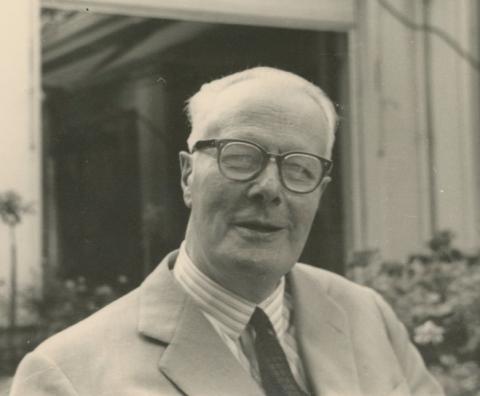Anton Lanckoroński graduated from the Schottengymnasium in Vienna and then served from 1912 to 1917 as an officer in the Austro-Hungarian army. After the war and the re-establishment of the Polish state in 1918, he took Polish citizenship. Apart from managing the estate in Poland, Lanckoroński looked after the palatial building at Jacquingasse 16–18 in Vienna's 3rd district owned by him and his half-sisters Karolina and Adelajda, which their father Karl Lanckoroński had constructed in 1894/95 to house his art collection. In 1939 the collection comprised 3,600 objects, including paintings, tapestries, antiques, sculptures, applied art and a library. After the invasion of Poland by the Nazi German Reich, Anton Lanckoroński was considered an enemy of state. The Gestapo seized his property and art collection on 19 September 1939 on the basis of the Regulation on the Expropriation of Assets Hostile to the Volk and the State of 18 November 1938. Lanckoroński was staying at this time on the Rozdół estate in Poland, which under the German-Soviet Nonaggression Pact belonged to the Soviet Union. He subsequently fled via Romania to Switzerland. The seized art collection remained in the building in Jacquingasse and was under the trustee administration from 13 November 1939 of Friedrich Plattner, State Commissar for Education, Culture and Popular Education, who placed it in the care of the Central Monument Protection Office. In June 1939 the Central Office had placed 12 paintings from the collection, including works by Arnold Böcklin, Josef Anton Koch, August Pettenkofen, Anselm Feuerbach, Hans Thoma and Jan van Goyen, on the Reich list of valuable artworks and had them moved on 14 September 1939 for storage in Schloss Immendorf. Lanckoroński had been authorized in late August 1939 to export the paintings by Italian artists. After the promulgation of the Regulation on the Treatment of Assets of members of the Former Polish State of 17 September 1940, Hermann Göring appointed a temporary administrator from the Main Trustee Office East in Berlin for the Institute for Monument Preservation, as it was now called, to assess and sell the Lanckoroński collection. The Regulation on the Extension of the Führer Reservation to the General Government of Poland promulgated on 3 October 1942 ultimately prevented the collection from being sold. It was put in storage from August 1943 by order of Posse's successor Hermann Voss and the Institute for Monument Preservation. The collection was stored initially in the Augustinerkeller and Bodenkreditanstalt in Vienna, later in Schloss Steyersberg and Thürnthal and finally in Bergwerk Altaussee.
In February 1947 the Federal Ministry of the Interior revoked the seizure and in June 1947 the Federal Ministry for Securing Property and Economic Planning released the artworks, which had now been brought from Salzburg and the Central Collecting Point in Munich to the depot of the Federal Monuments Authority (BDA) in Vienna. Only the sculptures were stored in the basement of the building in Jacquingasse, which had been bombed in 1944. Lanckoroński had the paintings transported to the castle belonging to Karoline von Waldburg-Zeil in Hohenems. Export negotiations started in March 1948. The BDA had already released the family pictures and furniture in the collection in April 1948. The export negotiations for the paintings, drawings and illustrations that Ernst Buschbeck, custodian of the Picture Gallery of the Kunsthistorisches Museum (KHM), had deemed to be of "exceptional significance for Austrian art", took several years. A fire at Schloss Hohenems on 28 March 1950 extensively destroyed what was left of the collection in Austria. In 1951 export negotiations led to the donation of the painting Jupiter, Mercury and Virtue by Dosso Dossi and five antique objects to the Republic of Austria for the KHM, whereupon Buschbeck revoked the export ban in 1951, since Lanckoroński, who was now stateless, was no longer resident in Austria. After Anton Lanckoroński's death on 8 February 1965, the export of the objects was drawn out until 1973. In that year, Karolina Lanckorońska donated artworks by Carl von Blaas, Wilhelm Gösser and Karl Sterrer to the Österreichische Galerie. The most significant artworks in the reserved but severely decimated collection were bequeathed by Lanckorońska in 1994 to Polish cultural institutions. She sold others to finance projects of the Lanckoroński foundation established in 1967. In 1999 the Art Restitution Advisory Board recommended the restitution of the objects that had been donated to the KHM in connection with export authorization.

